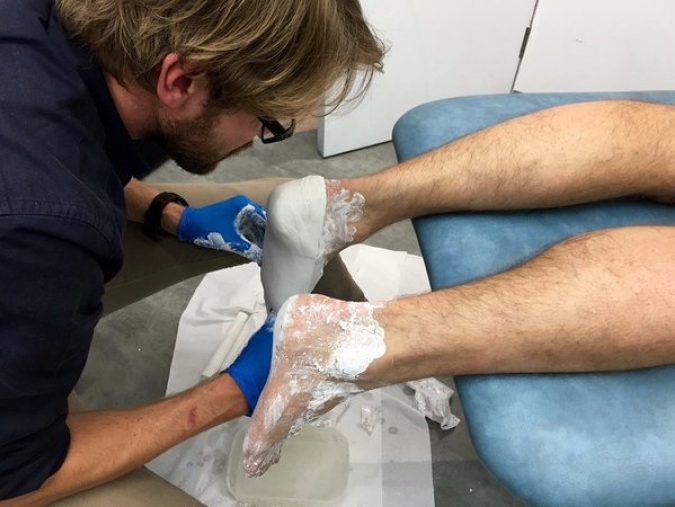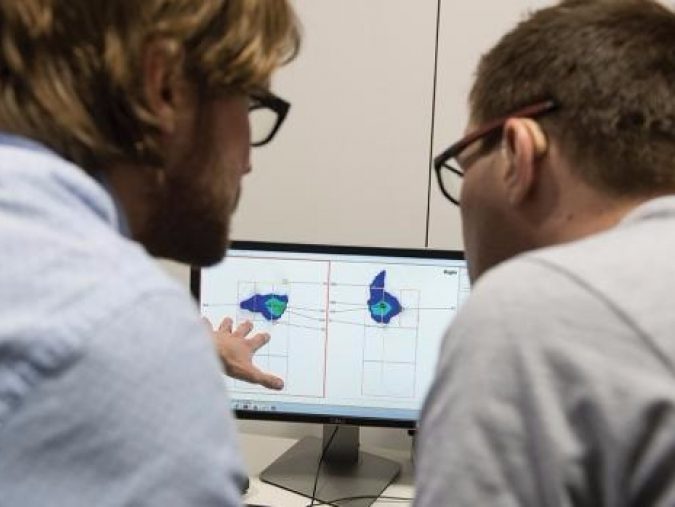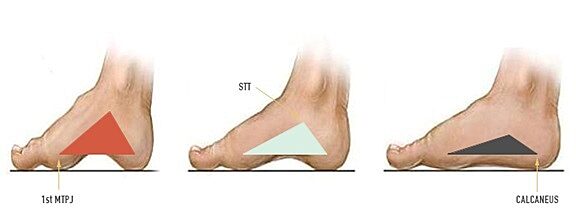Looking from the Ground Up
Being a Biomechanical Podiatrist, I’m a firm believer that the foot is the foundation of the body. However, having worked in sports medicine clinics for over a decade, I’ve heard all the arguments for-and-against this topic but it’s never more obvious when considering this analogy amongst our sport of cycling.
Get Off On The Wrong Foot
Now let’s not get off on the wrong foot as it’s by no means just about the foot / cleat position. What is particularly unique about cycling though, is that the foot remains essentially static and it’s not the sagittal movement (heel to toe i.e. walking / running) that’s important but the transverse (lateral to medial). The fact that it remains planted for the duration of the activity also suggests the need to evenly distribute the pressures across the foot/pedal interface from both a comfort and a performance perspective.
Now that that’s covered, let’s then consider this point of power transfer and how not to loose all that is generated via the body when the foot meets the pedal.
"The feet we see in front of each of us are the product of what we have done to them."
Power Transfer
Think of a world where everyone has a neutral ‘foot type’. A forefoot where all the metatarsal heads meet nicely on the same level, an even / congruent arch contour and a subtalar joint angle where the knee tracks directly over the foot in the presence of good ankle joint flexion. In short, a foot that doesn’t resemble the shape of a banana, have big bulges around the forefoot or look a little Charlie Chaplin-like when standing. We’d all be laughing as a one-size fits all policy to arch support would therefore work like a dream. Unfortunately, it comes as no surprise that this doesn’t often occur so we have to think a little outside the box.
In Touch with Your Inner Biomechanist
Now within every keen cyclist there appears to be an equally keen inner-biomechanist. So with this in mind, let’s approach the subject of “lever-arms”. Imagine the shape of the foot as a triangle and the three points for reference are the 1st MPTJ (big toe joint), the sustentaculum tali (STT) and the calcaneus (heel), as seen below.
The greater the length of the longest lever (the distance between the 1stMTPJ and the calcaneus), the greater the amount of energy and time that is required to effect a specific movement. Put simply, by keeping the lever short, it increases the action’s efficiency.
Stand in Your Feet
The feet we see in front of each of us are the product of what we have done to them. Yes, you all developed definitive foot types in your childhood but body type, elasticity, footwear, lifestyle etc all have an effect on how our feet look today and these flippers are what we use for cycling. It’s these influences that shape the curvatures of our joint’s connecting surfaces and over time, will determine the angles and direction at which our feet will move through each cycle revolution, thereby influencing the movement patterns of the major joints above it.
Take The Lever to The Ground or The Ground to The Lever?
In the far majority of clients I see, the 1st MTPJ sits higher than the 5th MTPJwhen the hindfoot is placed in its “ideal” position.
Potentialise Your Foot!
So what does this mean? Well, knowing that the greatest amount of potential power in the foot will be generated by the contact of the 1st MTPJ against the pedal, what happens when this joint doesn’t even touch the pedal when the foot’s in it’s ideal position. You’re either going to lose the “ideal” position, take an eternity to generate the power or both.
That's My Job!
And which one of these scenarios would you prefer? If we can’t bring the lever to the ground, then we must bring the ground to the lever. There is no cookie-cutter mold, no one-size fits all policy to foot mechanics but everyone’s foot type has the ability to create power in the shortest amount of time with the least amount of expended energy. It’s simply my job to find it




